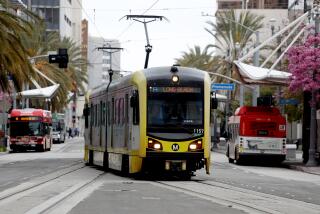New York’s subway has always been a chamber of horrors. But when did it get this bad?
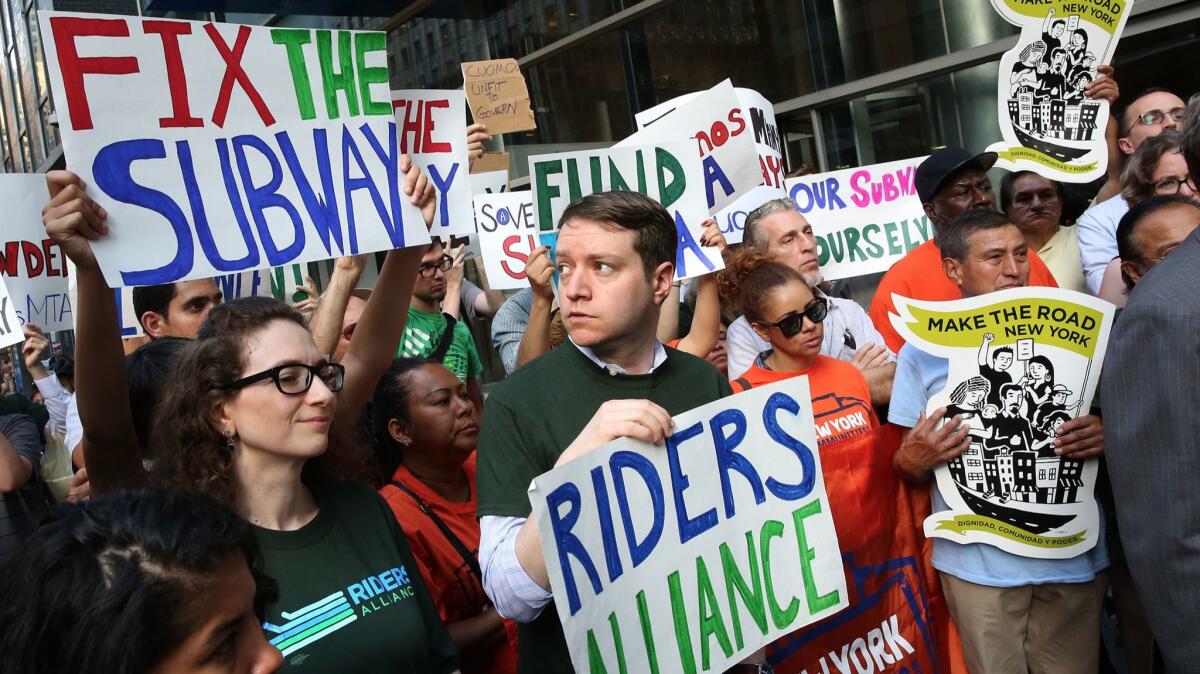
- Share via
Reporting from New York — “Die Kitties Die!” screamed the headline in the New York Daily News when, in 2013, former Metropolitan Transportation Authority chief Joe Lhota criticized a decision to pause trains in a Brooklyn subway station to rescue a pair of kittens lost on the tracks.
These days, New York so badly needs to get the trains to run on time that Lhota, whose unfortunate anti-cat comments caused a minor scandal, has been brought back as chairman of the transit agency.
Extreme measures are in order to fix the 112-year-old subway system, and nothing — not budget cuts, political infighting, or cats — can stand in the way.
Delays have doubled over the last five years, and accidents are on the rise. A subway derailed last week, crashing into a wall and igniting a trash fire after hitting equipment left on a track near 125th Street in Harlem. Nobody was seriously injured, but hundreds of terrified passengers had to evacuate through a smoky underground passage lighted only by their cellphones.
On the heels of the derailment, Gov. Andrew Cuomo this week signed an executive order declaring a “state of emergency” on the subways, making official what many New Yorkers in their gut already know. The governor also allocated an additional $1 billion for improvements.
Few think it will make much impact for the largest subway system in the United States, with 665 miles of track and 472 stations.
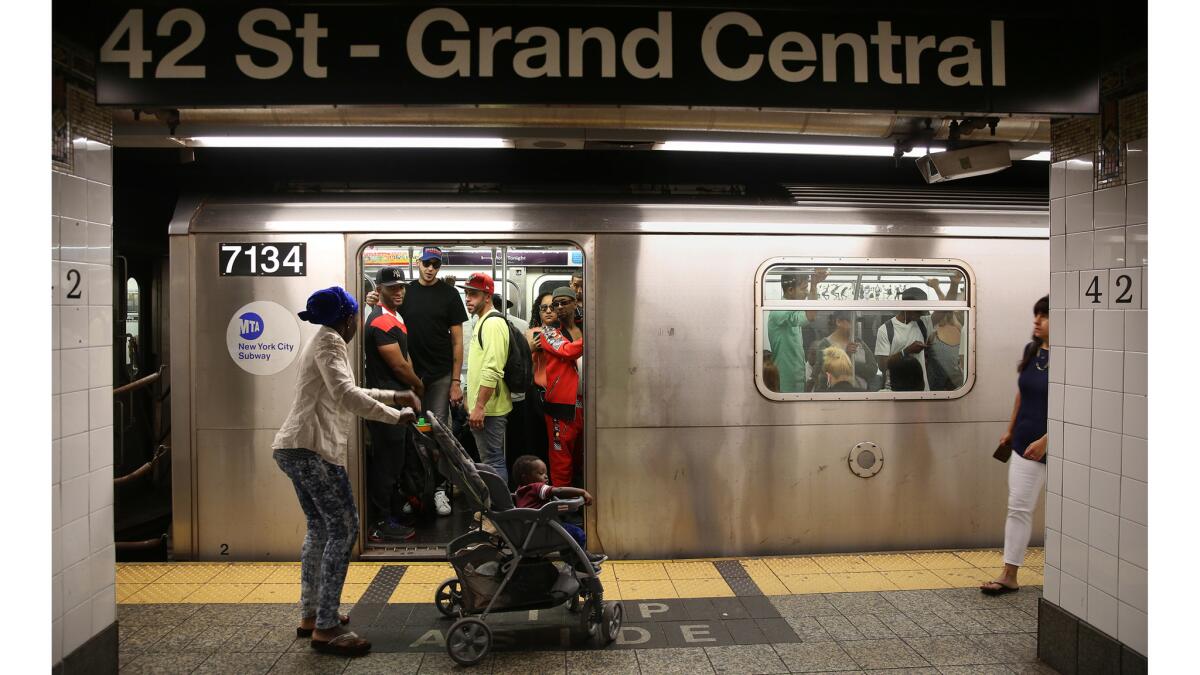
“It’s a good start, but where will the other billions come from?” asked John Raskin, executive director of the Riders Alliance, a grass-roots passenger advocacy group.
The alliance has been holding impromptu protests demanding improvements in service and has even published a book, “Subway Horror Stories,’’ with first-person accounts of mishaps on the subway.
Recent months have brought plenty of fresh anecdotes. Passengers improvised a graduation ceremony May 31 on a stalled E train from Queens to Manhattan for Jericho Marco Alcantara, who missed the real thing at Hunter College because of the delays.
When a rush-hour train stalled for 45 minutes last month without power or air conditioning, doors and windows locked, turning the cars into a virtual steam bath. Passengers stripped nearly naked and someone scrawled on the steamy window, “I will survive.” Two weeks ago, passengers escaped from a similarly stalled train by walking along the subway tracks, in peril of electrocution.
“Subway riders are tired of risking their lives, their jobs, their sanity,’’ yelled one of the protesters, Jackie Cohen.
To be sure, the system isn’t as bad as it was in the 1980s, when cars were covered with graffiti and riders had to look over their shoulders for fear of being mugged.
Today the subways are in some ways victims of their own success. The city’s economy is booming and so is public transit ridership. Nearly 6 million people a day use the subway, up from 4 million in the 1990s, and they are packed into a system that has barely grown at all.
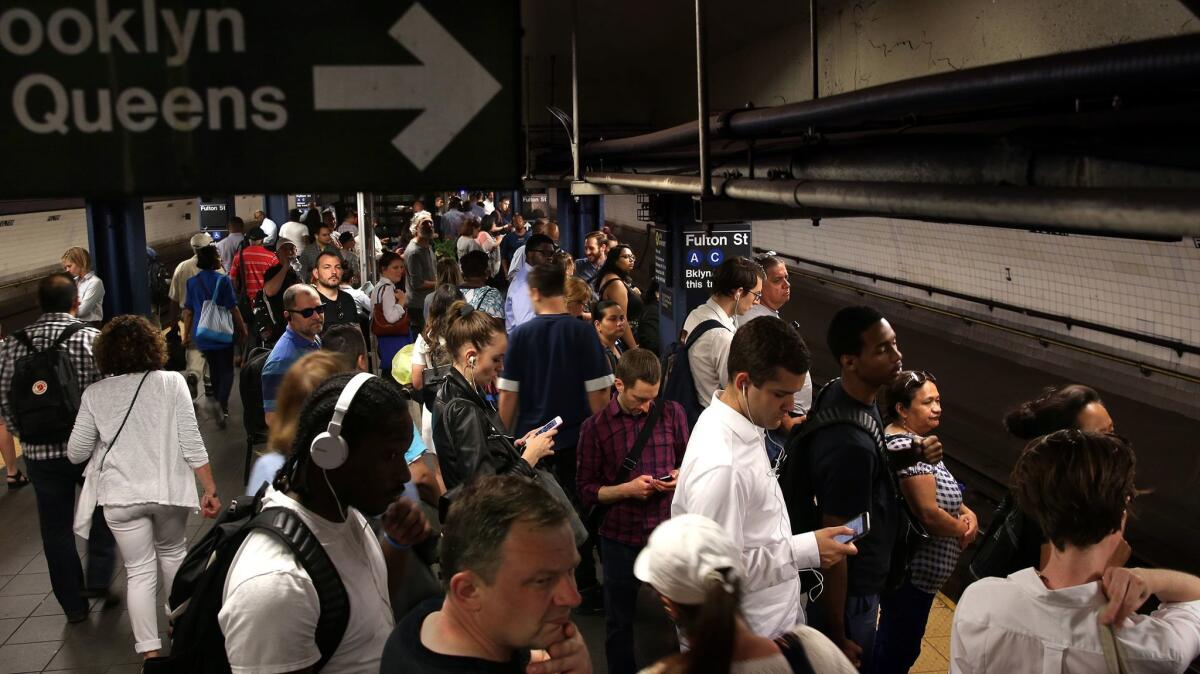

The Metropolitan Transportation Authority’s own data show that about one-third of the 58,651 delays reported in April, the most recent month available, were caused by overcrowding.
Many of the subway system’s cars date back to the time of the 1964 New York World’s Fair. And the system cannot ease overcrowding by simply ordering new cars because the 70-year-old switching system is too antiquated to manage more cars on the same tracks without a risk of collisions.
There have been no upgrades over the years. With champagne toasts and a live jazz band, a black-tie crowd of dignitaries hosted by the governor attended the New Year’s Eve opening of the long-delayed Second Avenue subway, built at a cost of $4.5 billion. Many subways now have WiFi and a link to free downloads from the New York Public Library. Buses are adding USB charging stations.
But upgrades that don’t lend themselves to photo opportunities have gone neglected.
“What we need is the unsexy, behind-the-scenes maintenance and equipment that actually keeps the subway running,’’ said Raskin.
“The tracks are not well-maintained. When something goes wrong, they do a quick fix on them,’’ said John Ferretti, a subway conductor and shop steward for the Transport Workers Union. “We work on cars that are almost 60 years old where the power and the air conditioning is not working. People yell at us because we are wearing an MTA uniform. When that train is stuck, it’s up to us to keep 2,000 customers from freaking out.’’
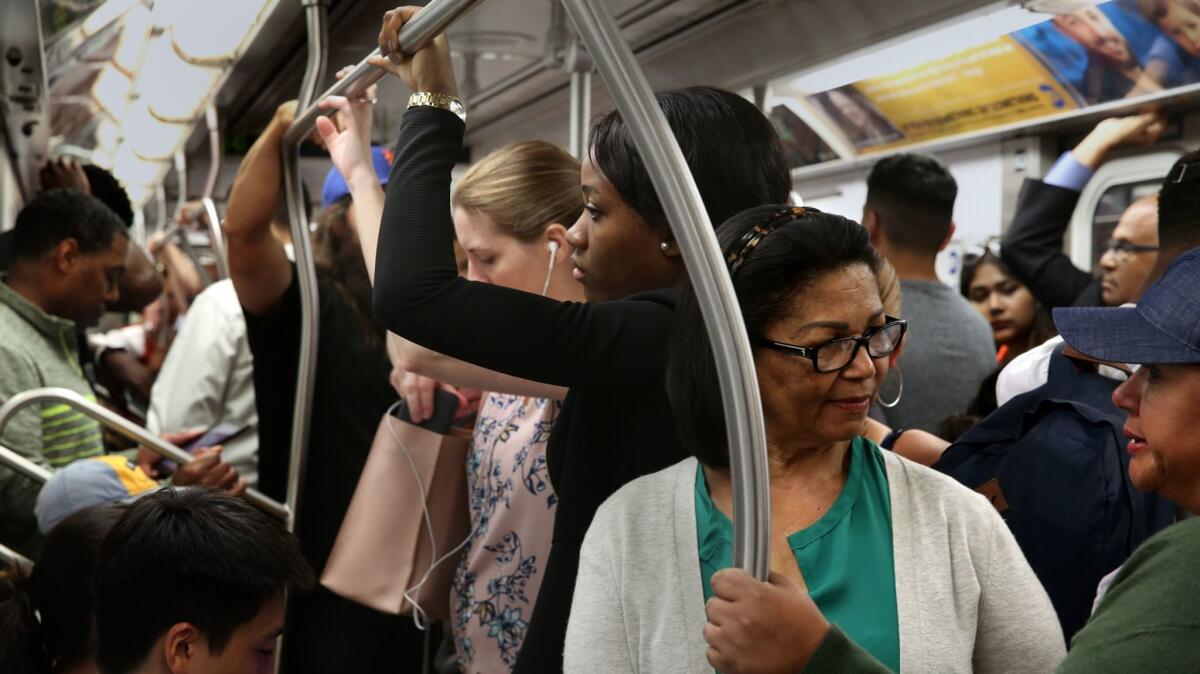
Politically speaking, the New York City subway system is something of an orphan. Contrary to expectations, it falls under the jurisdiction of the state, not the city, a situation that has allowed the mayor and the governor — in this case Bill de Blasio and Andrew Cuomo, Democrats who don’t particularly get along — to blame each other when something goes wrong.
“The governor has been indifferent to issues surrounding the subways. He feels he can take the votes of urban Democrats for granted and that he has to spend his time wooing swing voters in the suburbs,’’ said David Bragdon, executive director of TransitCenter, a foundation dedicated to public transportation.
New York City also gets the short shrift because, unlike Paris, London, Beijing, Tokyo and Moscow, which also have large subway systems, it is not a national capital.
“The London subway system is older. So is the Paris subway system. But they are national capitals. New York is not, and we have a federal government that is hostile to urban areas,’’ said Bragdon.
The rising chorus of complaints about the subways prompted Cuomo last month to bring Lhota back. A respected administrator, Lhota is credited with getting the transit system up and running quickly after the devastating flooding in 2012 from Superstorm Sandy — after which he resigned to make an unsuccessful bid for the Republican mayoral nomination. (It was during that mayoral campaign that he became famous for his comments about the kittens.)
His reappointment has raised expectations.
Lhota has been given 30 days to conduct an audit that he calls the subway recovery and transformation plan. At a conference of transportation experts this week, he said his priority is to upgrade the technology to current standards.
“The system opened in 1904. It was designed in the 19th century. For the most part, it is still running on concepts that were developed by folks in the late 1800s, and that’s problematic in this, the 21st century,’’ Lhota said at the conference.
The promised improvements may come just in time for subway riders who say they are losing patience. This year for the first time in decades, subway use dipped slightly — a phenomenon attributed to commuters switching to ride-sharing apps and bicycles.
“I haven’t had anything terrible happen to me, but honestly I’m worried. I’m old now. What if I have to climb out of a train?’’ said 82-year-old Marilyn Savetsky, a retiree clutching her Chihuahua who attended a protest last week. She has now switched to the bus.
Jason Hanes, 35, a recruiter for an insurance company, said he got so fed up with the subways that he changed his lifestyle entirely.
“The subways are just too erratic,’’ said Hanes. “I moved to New Jersey and bought a car.’’
ALSO
GOP’s Plan B for Obamacare -- repeal first, replace later -- began with quiet push from Koch network
Doctor guns down former colleague and wounds 6 others before killing himself at Bronx hospital
Immigrant rights groups denounce new ICE policy that targets parents of child migrants
More to Read
Sign up for Essential California
The most important California stories and recommendations in your inbox every morning.
You may occasionally receive promotional content from the Los Angeles Times.
